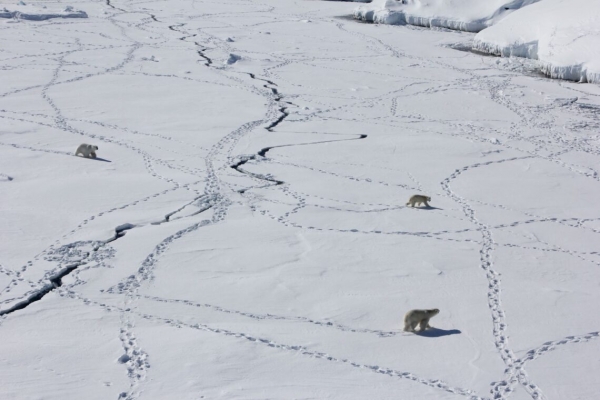Polar bears in some parts of the high Arctic are developing ice buildup and related injuries to their feet, apparently due to changing sea ice conditions in a warming Arctic. While surveying the health of two polar bear populations, researchers found lacerations, hair loss, ice buildup and skin ulcerations primarily affecting the feet of adult bears as well as other parts of the body. Two bears had ice blocks up to 1 foot (30 centimeters) in diameter stuck to their foot pads, which caused deep, bleeding cuts and made it difficult for them to walk.
The study led by the University of Washington was published Oct. 22 in the journal Ecology. It’s the first time that such injuries have been documented in polar bears.
The researchers suggest several mechanisms for how the shift from a climate that used to remain well below freezing to one with freeze–thaw cycles could be causing ice buildup and injuries.
Read more at: University of Washington
Three adult polar bears travel across sea ice in eastern Greenland. Environments in the Far North that would have stayed well below freezing now experience freeze-thaw cycles and wet snow due to a warming climate. (Photo Credit: Kristin Laidre/University of Washington)
Sci/Tech Top Stories Climate Wildlife

